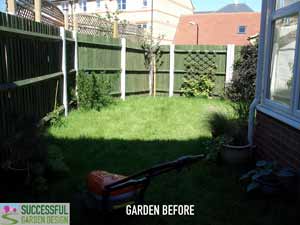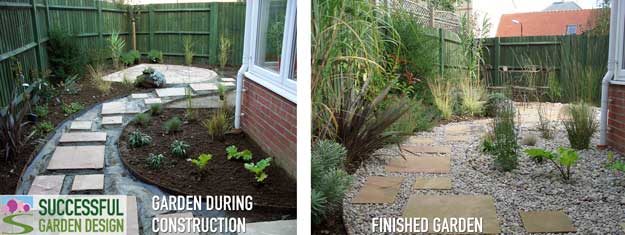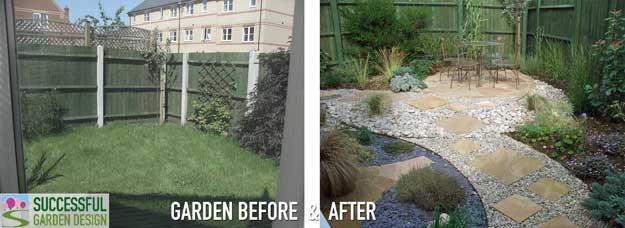
L-shaped gardens can be difficult to deal with because one section is often quite narrow and leads into a larger area. To make the best use of the available space, it’s important to bear the following things in mind…
Step 1 Decide if you want to create two separate spaces or one continuous garden.
You have the choice with an L-shape garden, you can either separate the areas off and create two separate little gardens, or have the garden as a whole. If your garden is quite small, then it is usually better to leave the garden as one whole entity rather than creating two separate little areas, which may well be too small.
Step 2 Make the best use of the available space.
If one area of your garden is particularly long and narrow, then you need to take the eyes from one side of it to the other, creating either a meandering path or using shapes that make the space feel wider. Depending on the space available to you, interlocking circles and squares can do this. But if the space is really narrow then you are better off with a meandering path, as shown in our case study example below.
Step 3 Use the same materials to keep the continuity between each area of garden.
By using similar shapes and materials throughout the garden, it will help hold it together as one whole entity. A bit like in modern day show homes where they have the same carpet running from one room to another. They do this because if they were to have different coloured carpets in each room of the house, it would make the space look smaller and not larger. The same is true for your garden. Use the same paving, gravel and even repeating key plants will enable you to make the space look and feel larger than it is.

If your garden is small, like our example garden, then you need to decide if you want to keep the lawn or not. As you can see in our example, the owner decided to get rid of the lawn. Even if you don’t want a lawn, you do still need to have areas of empty space so that the garden doesn’t feel too confined. In this case we used mixtures of different types of gravel and cobble and paving in the areas without planting.
Over time, the planting will increase in size and will help make up for the lack of green that a lawn provides.
The sweeping curves of gravel and steppingstones draws the eye around the garden and helps make the space look wider and the paving with seating area is in the sunniest area of the garden and helps acts as a nice focal point from the kitchen window and the conservatory.

The garden is very low maintenance because all of the cobbles and gravel are on top of a weed suppressant membrane.
Want to learn more?
Attend one of our FREE Fast Track Garden Design online classes…
Register on this page: https://www.successfulgardendesign.com/freeclasses/

1 Response to "L-shape garden design – Case study"
i need to talk to u directly, how can i? i am in Ghana.